
There’s something undeniably magical about waterfalls. The way they roar, tumble, and shimmer in the sunlight—it’s nature at its most powerful, yet soothing.
Whether it’s a thundering cascade carving through rugged cliffs or a gentle veil of water hidden deep in the woods, each one tells a story. And let’s be honest—nothing beats the feeling of standing in their mist, heart racing, completely in awe.
This isn’t just a list of trails—it’s an invitation to chase the most breathtaking waterfalls in the country. Ready to lace up your boots and experience the raw beauty of nature’s greatest show? Let’s go.
1. Havasu Falls, Arizona
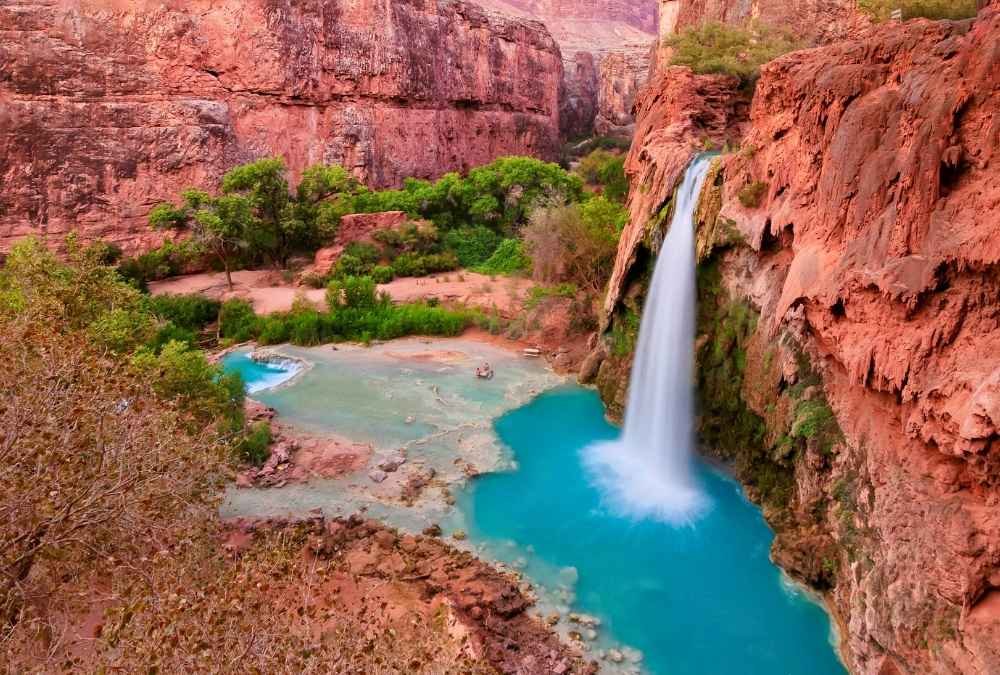
There’s no waterfall hike in the USA quite like Havasu Falls. Tucked deep within the Havasupai Indian Reservation, this otherworldly blue-green cascade is a reward for those who brave the challenging trek through the Grand Canyon’s rugged terrain. The hike itself is about 10 miles each way, and let’s be honest—it’s no walk in the park. But the moment you catch your first glimpse of those turquoise waters tumbling 100 feet over red sandstone, you’ll forget every mile.
Camping overnight here is a must because Havasu Falls isn’t just a place you visit; it’s a place you experience. From the serene pools perfect for swimming to the sound of cascading water lulling you to sleep, the whole vibe is unreal. And let’s not forget, getting permits is like winning the lottery—they sell out almost instantly each year. But trust me, the planning, the hiking, the exhaustion—it’s all worth it for this once-in-a-lifetime adventure.
🔹 Quick Travel Tips:
- Best Months to Visit: March to June, September to November (avoid summer—it’s scorching)
- Difficulty Level: Strenuous (10 miles one way, no water sources on the trail)
- Permit Required? Yes, highly competitive (book early!)
- Best Feature: That surreal, Caribbean-blue water in the middle of the desert
- Where to Stay: Camping or the Havasupai Lodge in Supai Village
2. Yosemite Falls, California
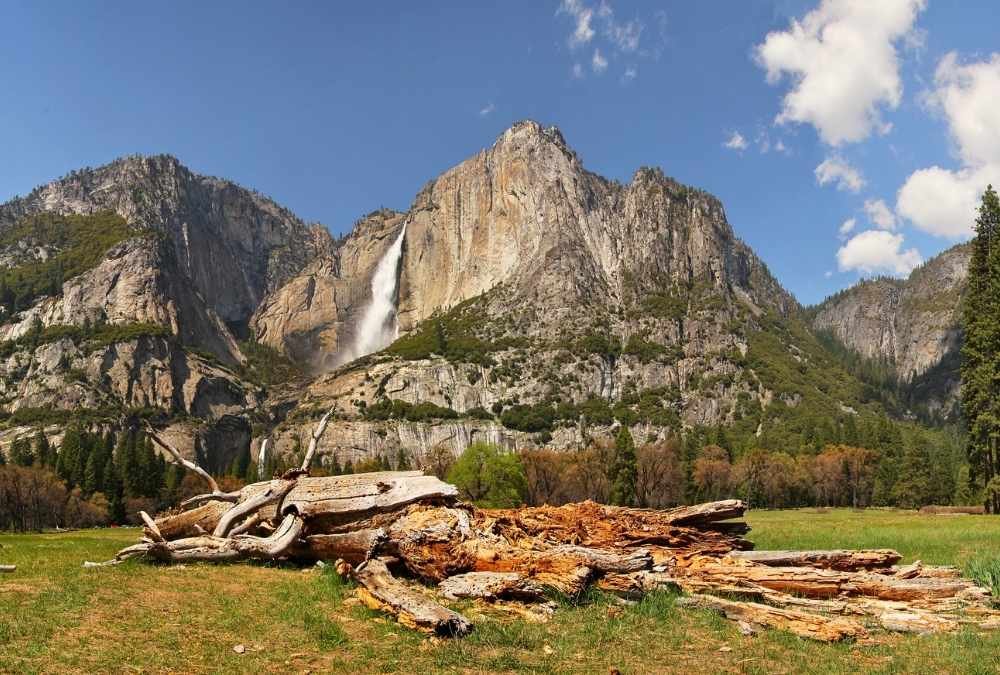
Yosemite Falls isn’t just a hike—it’s a monument of nature’s power. Standing at 2,425 feet, this is the tallest waterfall in North America, and it will humble you with its sheer magnitude. The hike to the Upper Falls is no joke, climbing over 2,600 feet in just 3.5 miles, but the rewarding panoramic views of Yosemite Valley make every step count.
If you’re not up for the intense climb, don’t worry—the Lower Falls trail is a much easier, family-friendly option that still lets you experience this thunderous natural wonder up close. But if you do make it to the top, standing at the brink of the falls, looking down at the valley, it’s one of those moments where you just go, “Wow, nature is insane.”
🔹 Quick Travel Tips:
- Best Months to Visit: April to June (peak flow season)
- Difficulty Level: Moderate (Lower Falls) to Very Strenuous (Upper Falls)
- Permit Required? No, but early starts are essential for avoiding crowds
- Best Feature: The roaring spring runoff that makes the falls explode with energy
- Where to Stay: Yosemite Valley Lodge or camping in the park
3. Multnomah Falls, Oregon
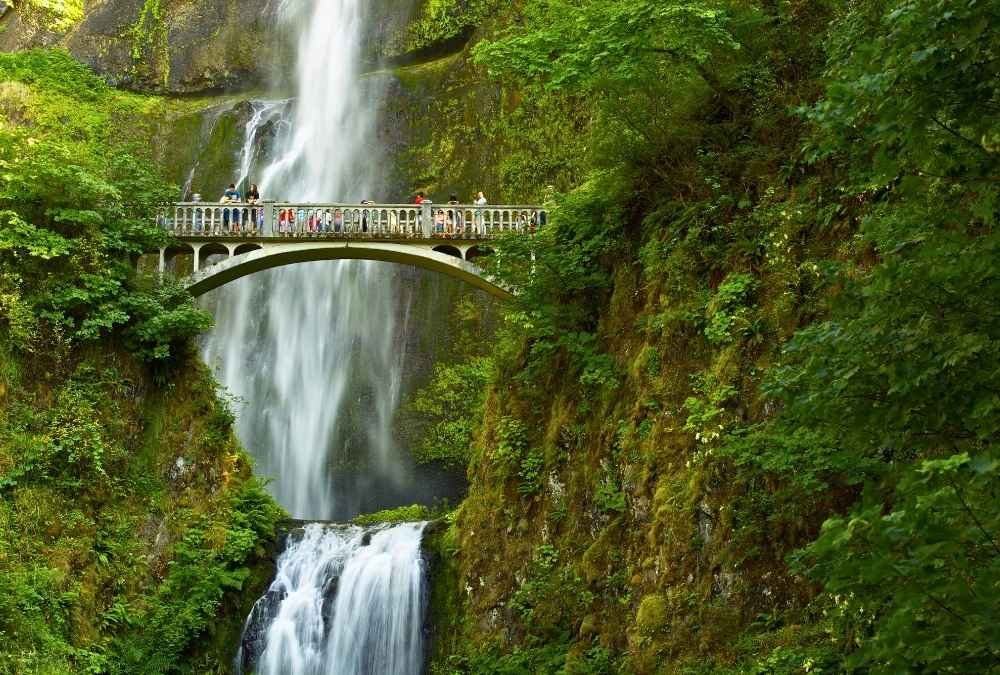
If you’ve ever scrolled through photos of Oregon, chances are you’ve seen Multnomah Falls. Towering at 620 feet, this iconic cascade in the Columbia River Gorge is one of the most photographed waterfalls in the USA. And the best part? It’s incredibly accessible—you don’t need to be a hardcore hiker to enjoy it.
A quick 5-minute walk from the parking area gets you to the Benson Bridge, where you can feel the mist on your face as you stand between the two-tiered waterfall. For those who want to get their steps in, the 1.2-mile hike to the top offers even more incredible views. But honestly? Even just sitting at the bottom with a coffee from the historic lodge and soaking it all in is a magical experience.
🔹 Quick Travel Tips:
- Best Months to Visit: Year-round, but spring and fall have the best flow
- Difficulty Level: Easy to moderate (depends on how far you go)
- Permit Required? No, but parking can be a nightmare—go early
- Best Feature: The storybook-like bridge over the falls
- Where to Stay: Hotels in Hood River or nearby lodges
4. Alamere Falls, California
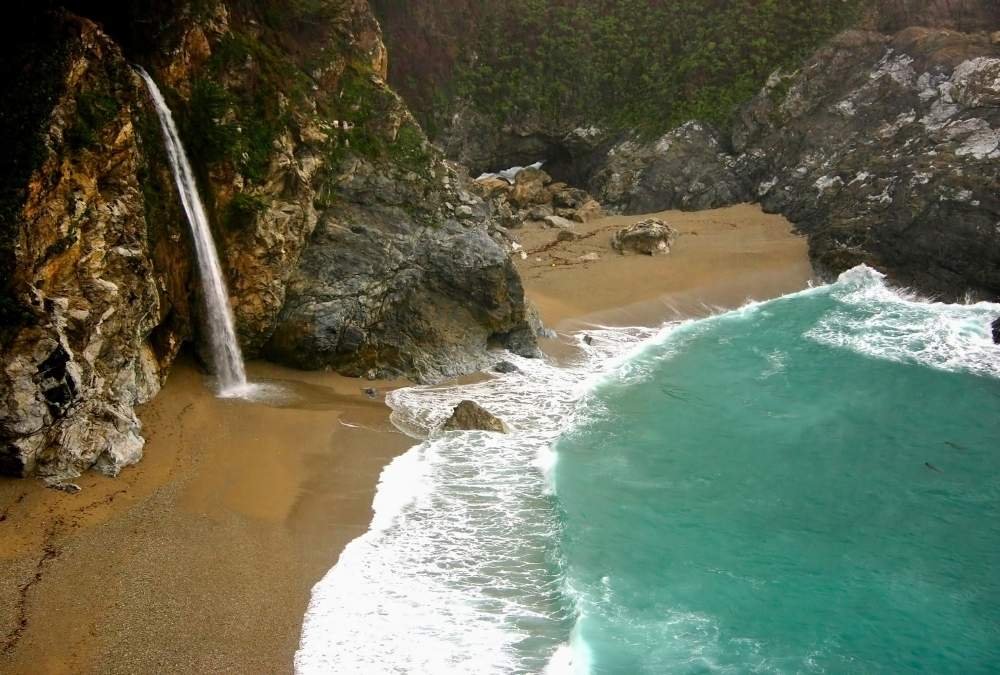
Waterfalls that drop straight onto a beach? Yes, please! Alamere Falls in Point Reyes National Seashore is one of California’s most unique hikes, leading you through lush coastal trails, past hidden lakes, and finally to this one-of-a-kind waterfall that cascades directly onto Wildcat Beach.
The 8.4-mile roundtrip trek is moderate but long, with a few sections requiring careful footwork. But once you reach the cliff’s edge and see the Pacific Ocean stretching endlessly before you—with the falls tumbling straight into the sand—it’s hard not to feel completely in awe. Just make sure to time your visit with low tide if you want to explore the base safely!
🔹 Quick Travel Tips:
- Best Months to Visit: Spring (April-May) for wildflowers or Fall (September-October) for fewer crowds
- Difficulty Level: Moderate, mostly flat but long
- Permit Required? No, but parking fills up fast
- Best Feature: A waterfall that meets the ocean—how cool is that?
- Where to Stay: Point Reyes Station or nearby coastal inns
5. Grand Falls, Arizona
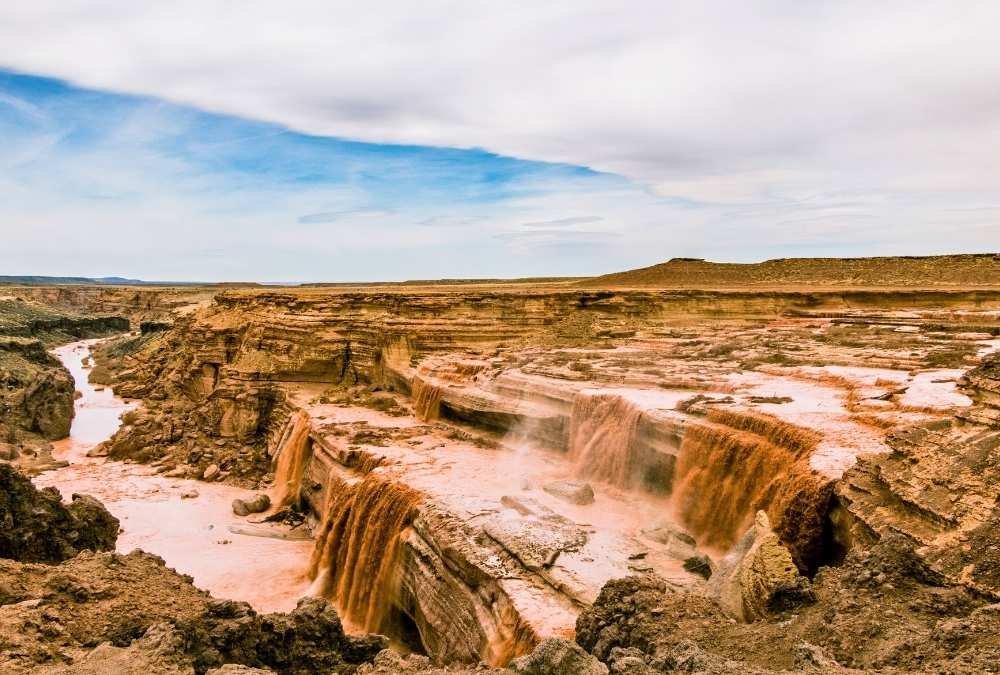
Known as “Chocolate Falls,” Grand Falls is one of Arizona’s best-kept secrets. Unlike the turquoise waters of Havasu, this massive seasonal waterfall looks like a cascading river of chocolate milk—thanks to the sediment-rich waters of the Little Colorado River. And while it’s not always flowing, when it does, it’s an absolute showstopper.
The best part? It’s only a 1-mile hike from the parking area, making it one of the easiest hikes on this list. But since it’s located on Navajo land, visitors should be respectful of local traditions. And if you time it right—usually after heavy spring rains or monsoon season—you’ll witness one of the most bizarrely beautiful waterfalls in America.
🔹 Quick Travel Tips:
- Best Months to Visit: March-April (after snowmelt) or July-August (monsoon season)
- Difficulty Level: Easy (only 1 mile)
- Permit Required? No, but it’s on Navajo land—respect local customs
- Best Feature: The milky-brown water that looks like a chocolate waterfall
- Where to Stay: Flagstaff (about an hour’s drive away)
6. Ramona Falls, Oregon
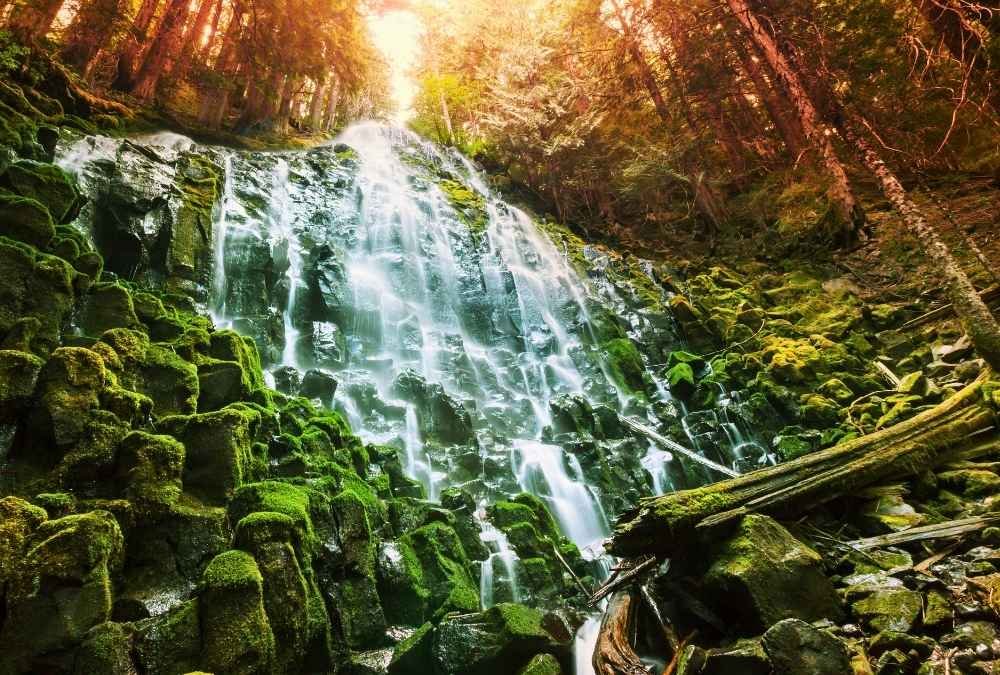
There’s something almost mystical about Ramona Falls. Nestled in the Mt. Hood National Forest, this 120-foot cascading beauty doesn’t just tumble down a cliff—it flows over a series of moss-covered basalt rocks, creating an effect that looks like a staircase of water. It’s not your typical thunderous waterfall; instead, it has a soft, ethereal quality, especially when the sunlight filters through the dense forest canopy.
The 7-mile loop trail to the falls is moderate and packed with a variety—of footbridges, forested trails, and views of Mt. Hood peeking through the trees. There’s even a river crossing involved, which adds a little adventure to the mix. And when you finally reach Ramona Falls? It’s pure magic—a perfect spot to sit, relax, and just breathe in the beauty.
🔹 Quick Travel Tips:
- Best Months to Visit: Late spring to early fall (June-September)
- Difficulty Level: Moderate (7 miles roundtrip)
- Permit Required? Yes, a Northwest Forest Pass
- Best Feature: The fairy-tale-like, multi-tiered waterfall
- Where to Stay: Government Camp or Rhododendron, Oregon
7. Niagara Gorge Trail, New York
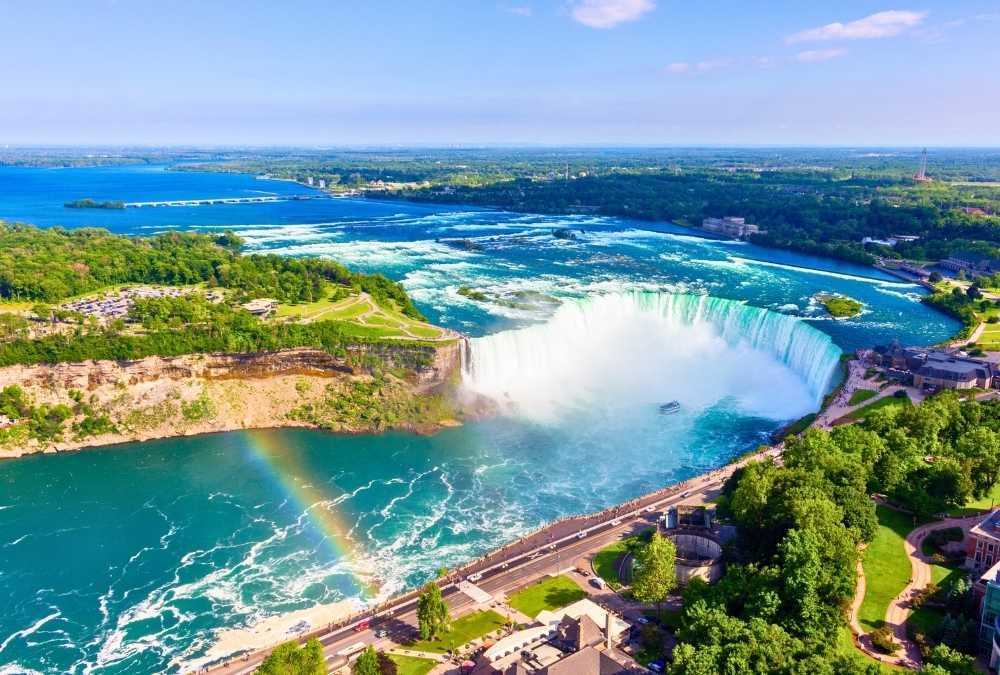
Everyone knows Niagara Falls, but did you know you can hike right into the gorge for a front-row view of its raw power? The Niagara Gorge Trail is an underrated gem, offering stunning views of the rapids, whirlpools, and multiple waterfalls along the way. And unlike the typical tourist-packed viewing platforms, this trail takes you deep into nature, where you can really feel the mist on your skin and hear the roar of the falls up close.
The trail itself is about 6 miles roundtrip, with sections that vary in difficulty. Some parts, like the Whirlpool Rapids Trail, are steep and rocky, while others, like the Great Gorge Scenic Overlook, are easier. But no matter where you go, one thing’s for sure—seeing Niagara from below is a whole different experience than just standing at the top.
🔹 Quick Travel Tips:
- Best Months to Visit: May to October (spring flow is best)
- Difficulty Level: Easy to moderate (depending on the section)
- Permit Required? No
- Best Feature: Getting so close to the falls you can feel the power beneath your feet
- Where to Stay: Niagara Falls, NY, or Ontario, Canada
8. Linville Falls, North Carolina
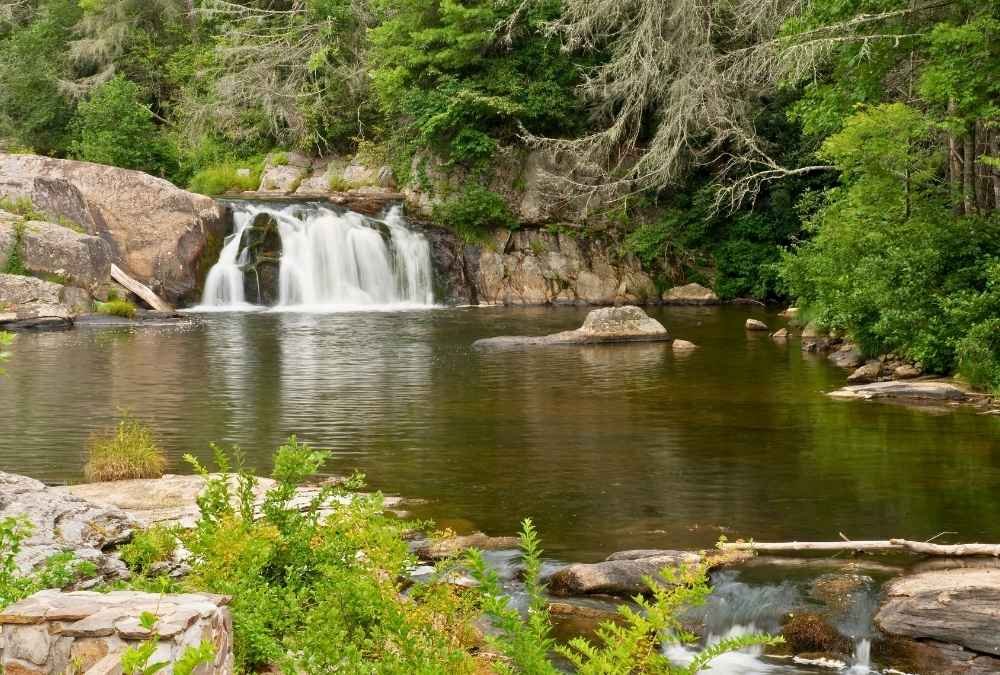
Nicknamed the “Grand Canyon of the East,” Linville Falls is a must-visit in the Blue Ridge Mountains. The Linville Gorge Wilderness is home to one of North Carolina’s most famous waterfalls, and it’s got something for every type of hiker. Want an easy walk to a stunning overlook? Done. Prefer a steep, rugged trek down to the base of the falls? You got it.
The falls themselves drop in multiple stages, tumbling 90 feet into a dramatic gorge. The most popular trail—the Erwins View Trail—is a moderate 1.6-mile roundtrip hike leading to several breathtaking viewpoints. But if you want a real adventure, take the Plunge Basin Trail down to the river—it’s steep, slippery, and worth every step for the up-close view of the roaring falls.
🔹 Quick Travel Tips:
- Best Months to Visit: September to November (fall colors are unreal)
- Difficulty Level: Easy to strenuous (depends on the trail)
- Permit Required? No
- Best Feature: Gorge views that make you feel like you’ve stepped into a painting
- Where to Stay: Asheville, NC, or nearby cabins
9. Cumberland Falls, Kentucky
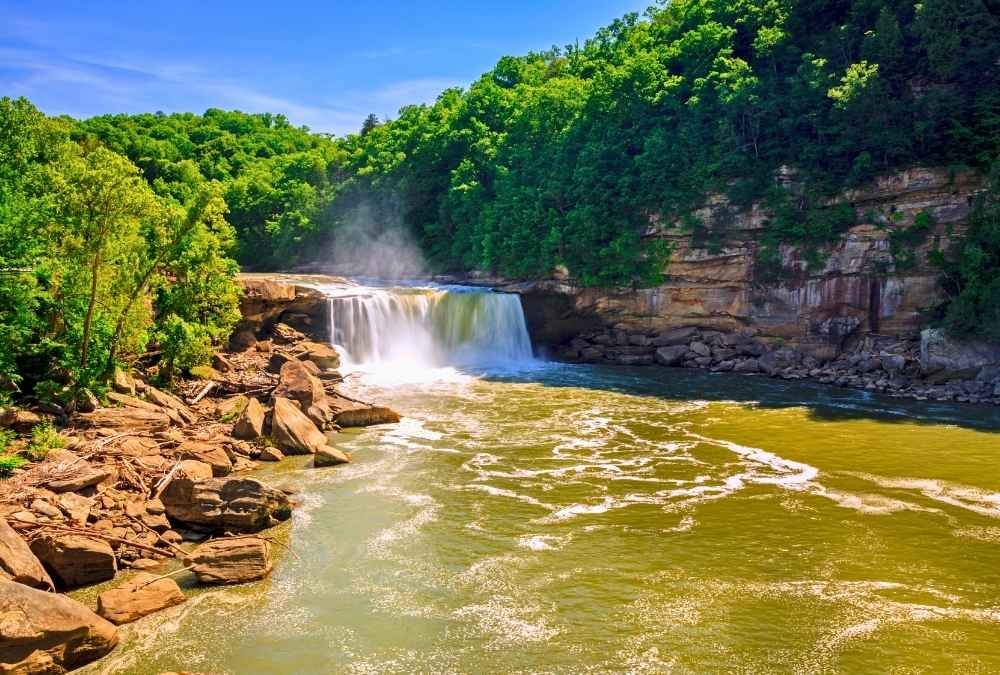
If you’ve ever wanted to see a “Moonbow”—a rare, rainbow-like phenomenon that happens only at night—then Cumberland Falls is your place. Sometimes called the “Niagara of the South,” this 125-foot-wide waterfall on the Cumberland River is nothing short of breathtaking.
The hike to Cumberland Falls is easy, making it one of the most accessible waterfalls on this list. But the real magic happens when the full moon rises—that’s when the mist creates a glowing white rainbow that arcs over the water. It’s one of the only places in the world where this happens consistently. Even if you visit during the day, the sight of the thundering falls cutting through the forest is something you won’t forget.
🔹 Quick Travel Tips:
- Best Months to Visit: Year-round (but visit during a full moon for the “Moonbow”)
- Difficulty Level: Easy (short, well-maintained trails)
- Permit Required? No
- Best Feature: That legendary Moonbow—seriously, it’s like magic
- Where to Stay: Corbin or Williamsburg, Kentucky
10. Whiteoak Canyon Trail, Virginia
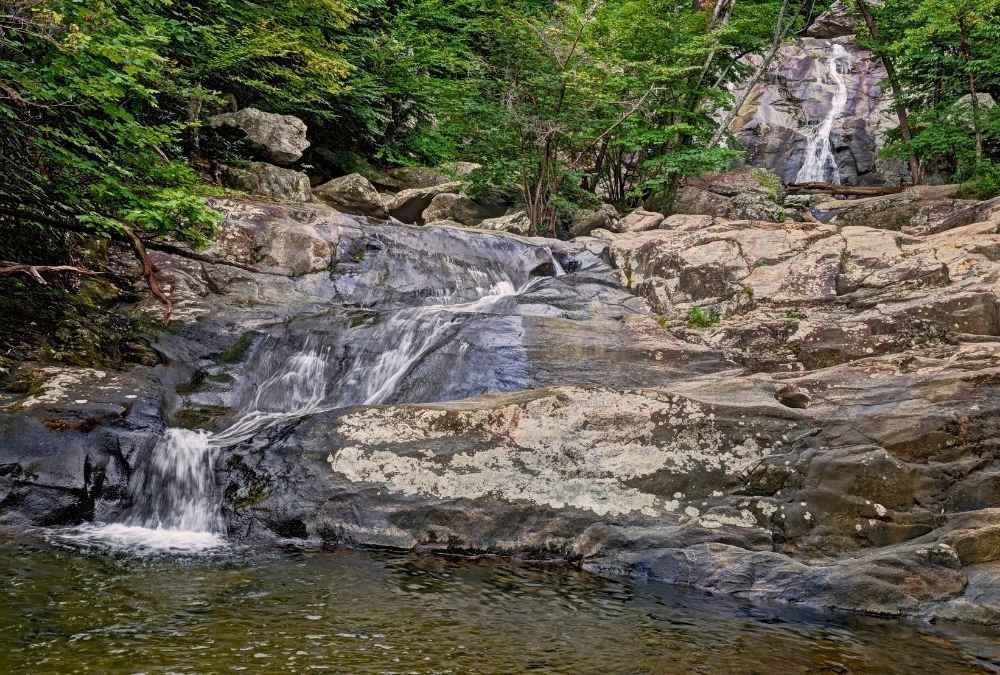
Shenandoah National Park is known for its rolling mountains, winding roads, and stunning vistas, but Whiteoak Canyon Trail adds something special—a series of six waterfalls tucked into the wilderness. It’s not just a hike to a single waterfall—it’s a whole adventure through some of the park’s best scenery.
The trail can be as easy or as challenging as you want. The Upper Falls viewpoint is an easy 2-mile roundtrip hike, perfect if you just want a quick waterfall fix. But for those who want a real challenge, hiking down to the Lower Falls (and back up) is an intense 8-mile journey with plenty of elevation gain. Either way, expect gorgeous cascades, deep swimming holes, and that peaceful, off-the-grid feeling that only Shenandoah can deliver.
🔹 Quick Travel Tips:
- Best Months to Visit: Spring (for peak flow) or Fall (for amazing foliage)
- Difficulty Level: Easy to Strenuous (depends on how far you go)
- Permit Required? Yes, a Shenandoah National Park entrance pass
- Best Feature: Six waterfalls in one hike!
- Where to Stay: Luray or Skyline Drive lodges
11. Ruby Falls, Tennessee
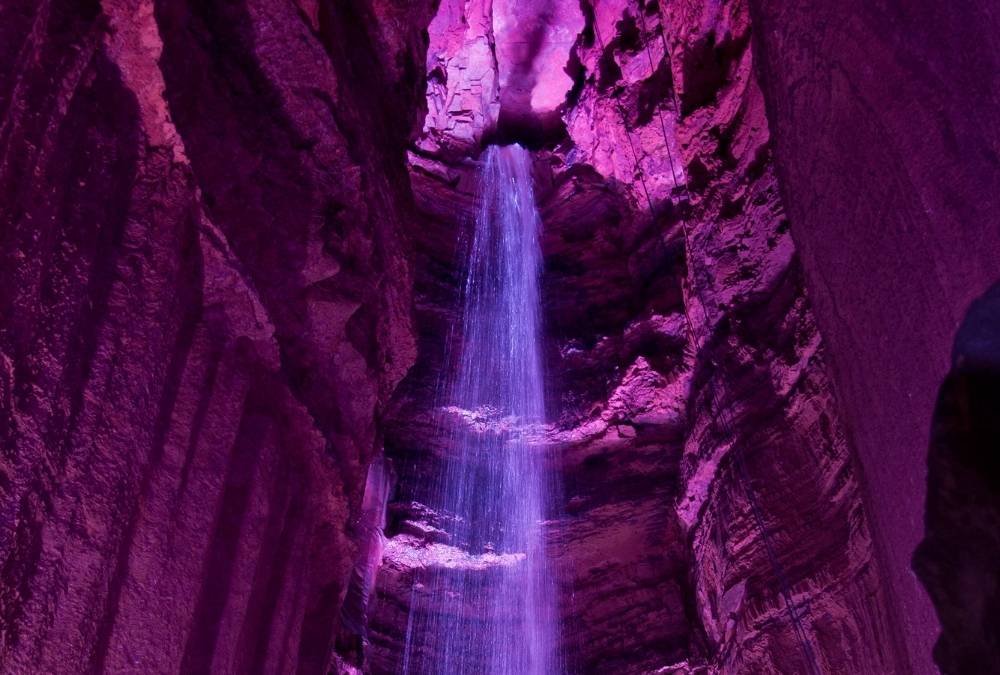
How often do you get to hike underground to a waterfall? That’s what makes Ruby Falls so special. Hidden inside Lookout Mountain near Chattanooga, this 145-foot underground cascade is the tallest and deepest waterfall open to the public in the U.S.
To reach the falls, visitors descend 260 feet into the mountain before following a mesmerizing cave trail filled with otherworldly rock formations. The final reveal? A dramatic, color-lit waterfall tumbling down a towering cavern—a scene that looks straight out of a fantasy novel. It’s a different kind of hiking experience, but one that’s unforgettable.
🔹 Quick Travel Tips:
- Best Months to Visit: Year-round (it’s underground, so weather doesn’t matter!)
- Difficulty Level: Easy (guided walk, not a hike in the traditional sense)
- Permit Required? No, but tickets sell out fast
- Best Feature: Seeing a massive waterfall inside a cave
- Where to Stay: Chattanooga, TN
12. Crabtree Falls, Virginia
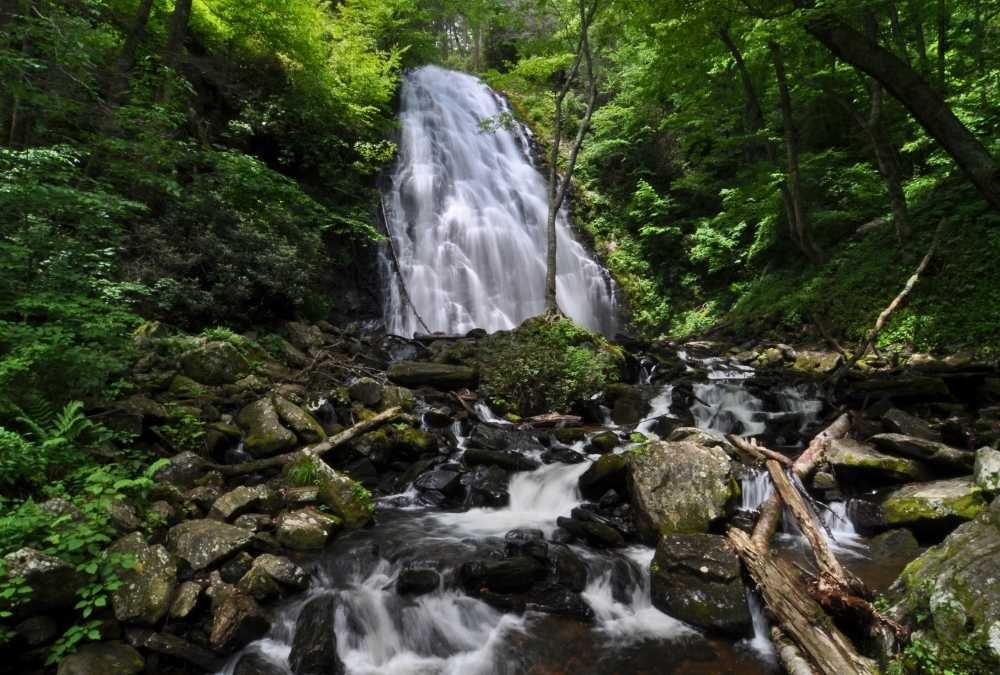
There’s something serene and timeless about Crabtree Falls, which tumbles down 1,200 feet in a stunning series of cascades—making it the tallest waterfall east of the Mississippi. It’s the kind of place where you can just sit, listen to the rushing water, and feel the weight of the world melt away.
The 2.5-mile roundtrip hike is moderate, with plenty of switchbacks leading to several viewpoints of the falls. The best part? The wooden overlook at the top, where you can gaze down at miles of forested wilderness, is a reminder of how small we are in nature’s grand design.
🔹 Quick Travel Tips:
- Best Months to Visit: Spring (for peak water flow) or Fall (for brilliant foliage)
- Difficulty Level: Moderate (rocky, but short)
- Permit Required? No
- Best Feature: Multiple cascades in one hike
- Where to Stay: Lexington or Staunton, Virginia
13. Bridal Veil Falls, Colorado
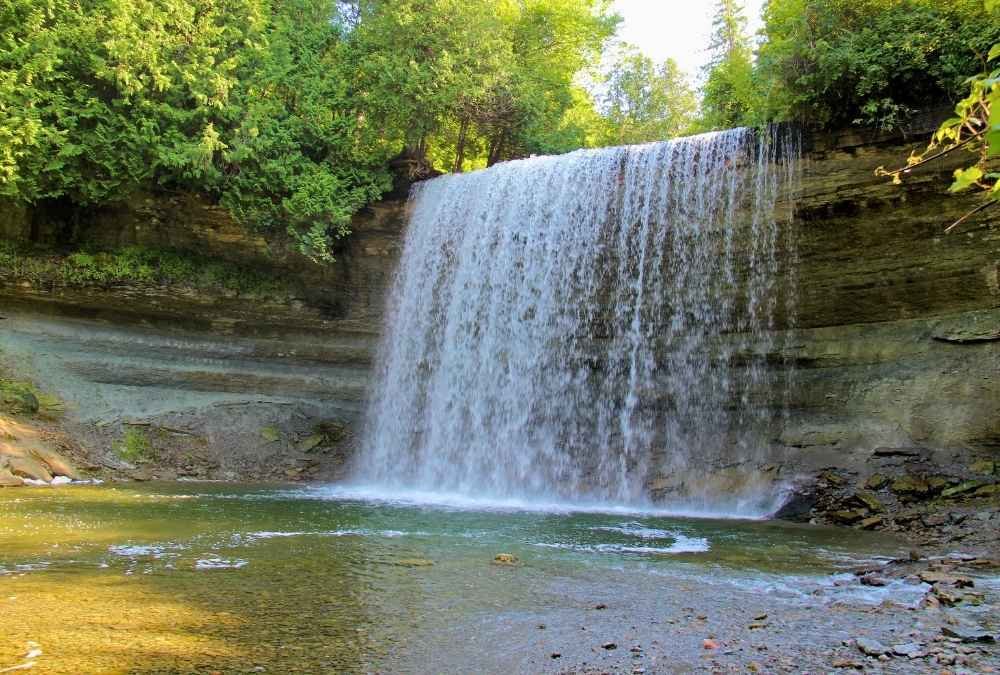
If you want dramatic mountain scenery with a side of adrenaline, Bridal Veil Falls in Telluride is for you. At 365 feet, this is Colorado’s tallest free-falling waterfall, and the journey to get there is just as epic.
The 1.8-mile (one-way) hike gains 1,200 feet in elevation, meaning you’ll feel the burn. But when you reach the historic power plant perched beside the falls—and take in the unreal panoramic views of Telluride’s box canyon—it’s a next-level reward. Winter adds a special twist: ice climbers scaling the frozen falls, turning it into a jaw-dropping scene straight out of an adventure film.
🔹 Quick Travel Tips:
- Best Months to Visit: Summer for hiking, winter for ice-climbing views
- Difficulty Level: Strenuous (steep and rocky)
- Permit Required? No
- Best Feature: The view from the top—it’s pure Colorado magic
- Where to Stay: Telluride, Colorado
14. Fall Creek Falls, Tennessee
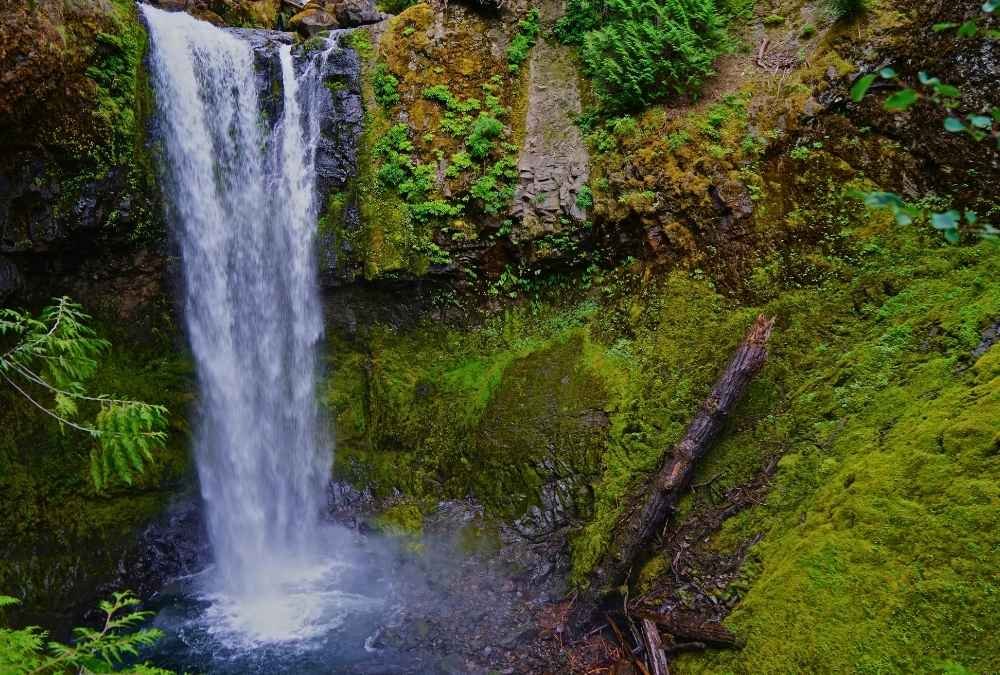
For those who love easy-access waterfalls without sacrificing the wow factor, Fall Creek Falls delivers. Dropping 256 feet, it’s one of the tallest waterfalls in the Eastern U.S. and sits within a stunning state park filled with hiking trails, suspension bridges, and canyons.
You don’t have to go far to see the falls—there’s a quick overlook trail that offers a stunning view. But if you’re up for more adventure, the steep but short trek to the base is worth it. Standing at the bottom, looking up at the massive cascade plunging from the cliffs, you can truly appreciate its scale.
🔹 Quick Travel Tips:
- Best Months to Visit: Spring or early summer for peak water flow
- Difficulty Level: Easy (overlook) to moderate (base trail)
- Permit Required? No
- Best Feature: One of the tallest waterfalls in the East, super easy to access
- Where to Stay: Fall Creek Falls State Park lodges or campgrounds
15. Tahquamenon Falls, Michigan

Nicknamed “The Root Beer Falls”, Tahquamenon Falls in Michigan’s Upper Peninsula is famous for its rich amber-colored water, caused by the tannins from surrounding forests. The contrast of golden-brown water against the lush green landscape (or snowy winter wonderland) is straight-up breathtaking.
The hike to the Upper Falls is short and easy, but if you want to go all in, take the 4-mile (one-way) trek to the Lower Falls, where you’ll find a series of smaller cascades and a peaceful river setting. In the winter? The falls freeze into icy formations, turning the whole area into a silent, frozen paradise.
🔹 Quick Travel Tips:
- Best Months to Visit: Fall (for foliage) or Winter (for frozen waterfalls!)
- Difficulty Level: Easy to moderate
- Permit Required? Yes, Michigan State Park pass
- Best Feature: The “root beer” colored water—it’s so unique!
- Where to Stay: Paradise, Michigan (yes, that’s a real town!)






